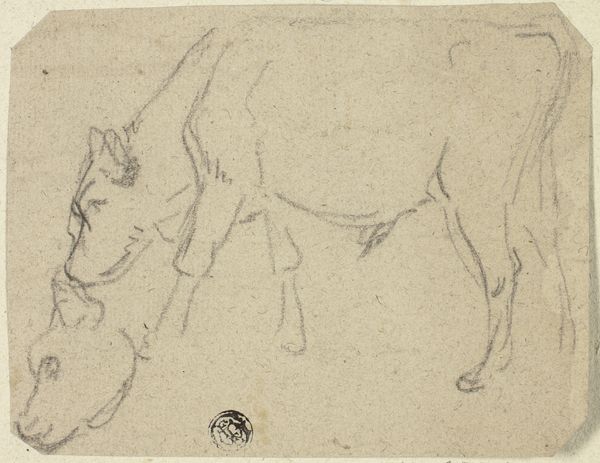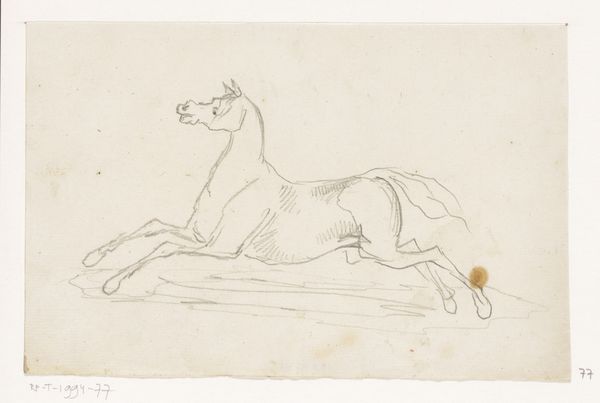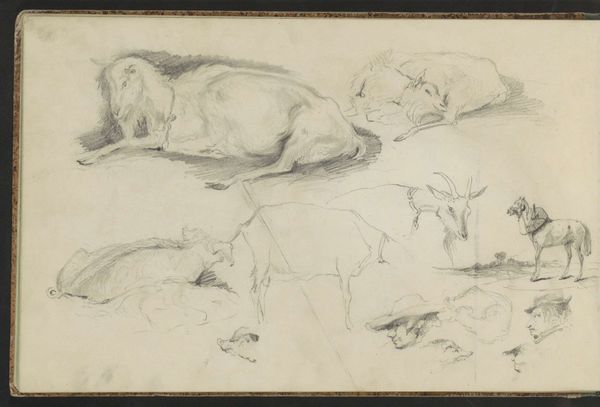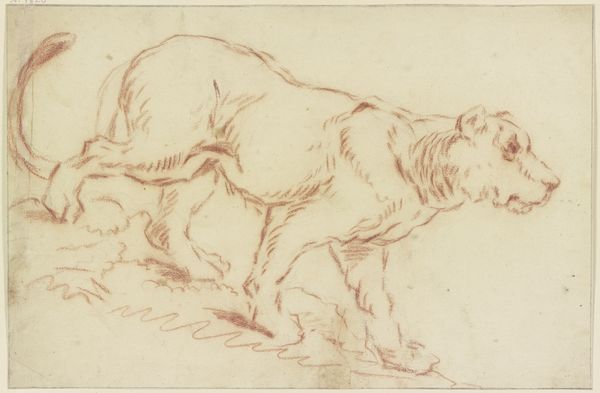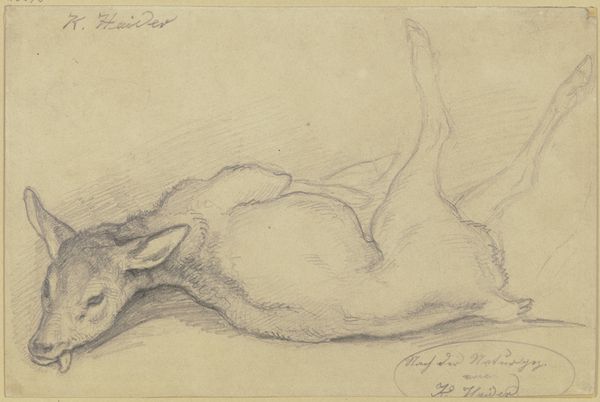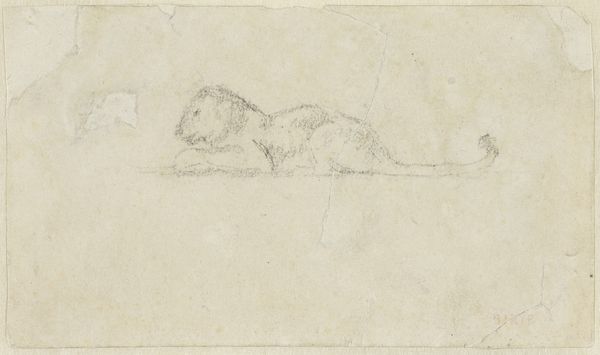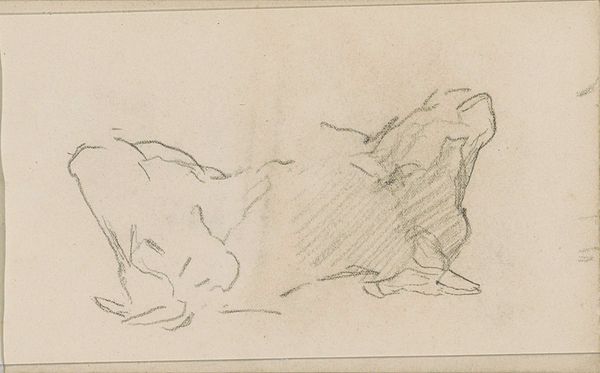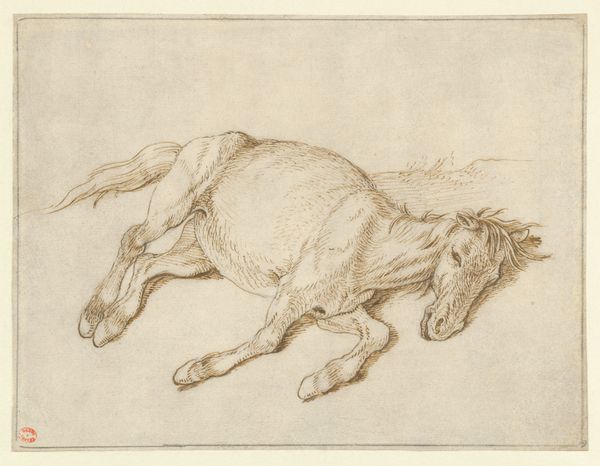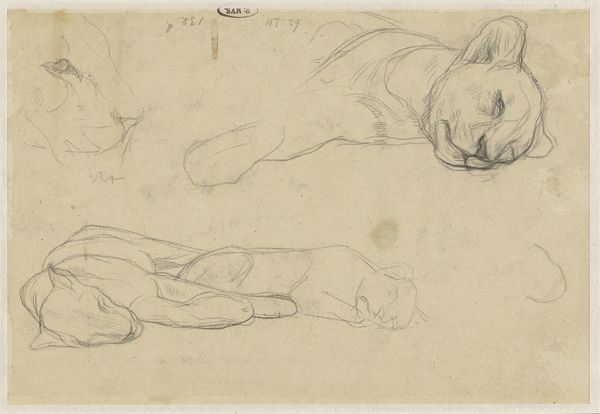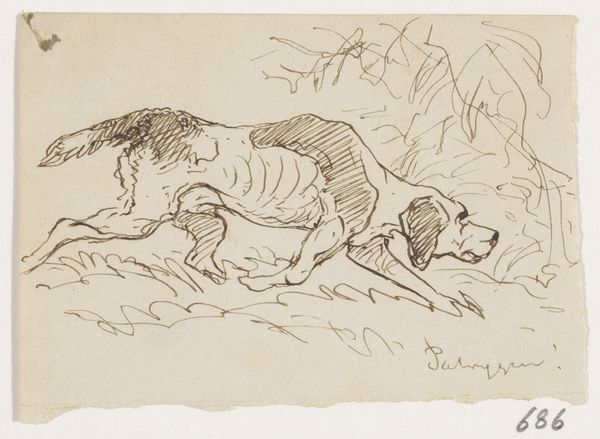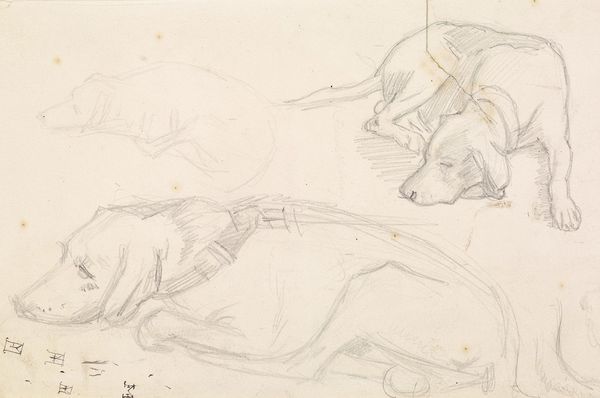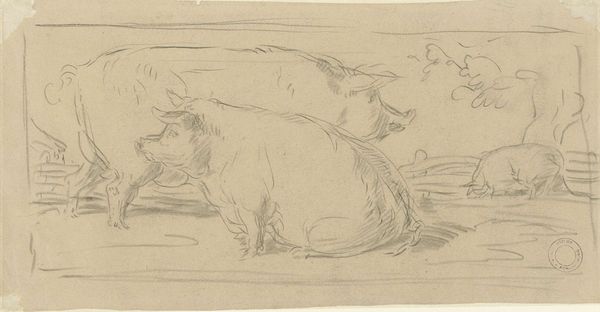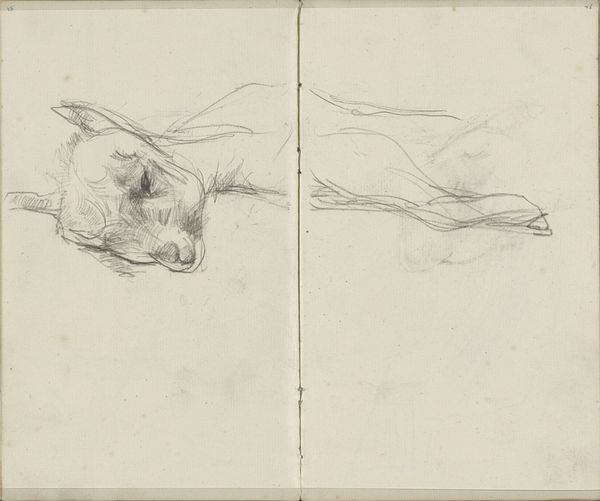
drawing, print, paper, pencil, graphite
#
drawing
# print
#
landscape
#
figuration
#
paper
#
form
#
romanticism
#
pencil
#
line
#
graphite
Dimensions: 206 × 283 mm
Copyright: Public Domain
Editor: Here we have Théodore Géricault's "Two Horses Galloping to the Right," made between 1818 and 1819. It's a pencil and graphite drawing on paper, currently housed at the Art Institute of Chicago. I'm really struck by the energy in this sketch; you can practically feel the horses in motion. What strikes you when you look at it? Curator: I see the direct engagement with the labor of representation. Géricault is not just depicting horses, he is revealing the physical act of drawing, the materiality of graphite on paper. We need to ask ourselves, what kind of paper? What graphite was accessible, and at what cost, at this time in France? Editor: So you’re less focused on the romantic depiction of horses and more on the materials that made the artwork? Curator: Precisely. The "romantic" ideal you mention couldn't exist without the materials that enabled it. What can the pencil strokes tell us about Géricault’s social standing, his access to resources, and the artistic conventions he was both adhering to and perhaps challenging? Editor: That’s interesting. I never thought about the access to materials as part of the interpretation, but that makes sense. Were high-quality materials hard to come by then? Curator: Absolutely! The availability and cost of materials dictated artistic choices. Consider the paper's texture – did that impact his shading technique? The lines themselves show the pressure applied to the graphite. This physicality demonstrates not just the artist's skill, but his labor. Editor: This really changes my view of the piece! I’ll be more mindful of the materiality of artworks in the future, looking at the labor behind the image itself, not just the subject depicted. Curator: Exactly. Considering the material and the means of production can open up new avenues of understanding and appreciation. It's not just about what is represented but how it came into being.
Comments
No comments
Be the first to comment and join the conversation on the ultimate creative platform.

